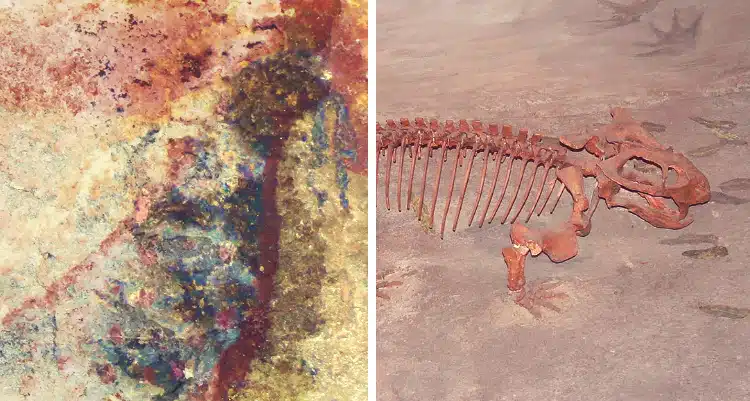
Left: Photo of cave painting in South Africa (Photo: Julien Benoit, published by PLOS ONE, CC-BY 4.0), Right: Dicynodont skeleton, which the painting may depict (Photo: Ninjatacoshell on Wikimedia, CC BY-SA 3.0)
About 200 years ago, in the Karoo region of South Africa, a member of the San civilization painted an elongated, tusked creature on a cave wall. It’s possible the walrus-like beast, known as the Horned Serpent, is a dicynodont—a species that lived in the area more than 200 million years ago and left numerous fossils. If the San did paint this extinct animal, it means that they found and documented its fossils, practicing a form of early paleontology.
Indigenous paleontologists and their contributions to our shared human heritage have been largely under-recognized. Julien Benoit, an Associate Professor of Evolutionary Studies at the University of the Witwatersrand in Johannesburg, wants to change that. His study on the Horned Serpent was published in September 2024 by PLOS ONE. He notes that this intriguing cave painting may predate the Western scientific identification of the dicynodont (Synapsida), a herbivore known for its two long teeth.
“If so, this would evidence that Later Stone Age people were aware of dicynodont fossils at least a decade before their formal scientific description by Western scientists and made the first known reconstruction of one of them,” writes Benoit. To further his case, he points to the plentiful local dicynodont fossils and San mythology about “great monstrous brutes” who once roamed the region.
The Horned Serpent is thought to be a rain animal from the San spirit realm, which would have been part of rain-bringing ceremonies. Benoit writes in the study that the San spirit pantheon is based upon their natural environment, and that this cultural tie-in does not undermine the paleontological aspect of the work. Benoit also recognizes that the tusks may resemble a snake or fish being held in the creatures’ mouth but states this potential representation of a snake does not “conform to the usual depiction of snakes in San rock art.” The study also reports the San have a documented practice of recognizing and using fossils, including in the Mokhali Cave of Lesotho, where San artists painted a dinosaur footprint and three dinosaur shapes.
“We know these are dinosaurs because they are depicted next to the painting of a dinosaur footprint, made in an area where fossil dinosaur footprints are commonplace,” Benoit tells Popular Science. Benoit concludes in the recent study that the evidence he considered supports the hypothesis that “the Horned Serpent panel could possibly depict a dicynodont.” This would mean the San, who lived in South Africa for 20,000 years and whose culture is now extinct, were Indigenous paleontologists.
Another of Benoit’s studies in 2023 found diverse African cultural activity relating to fossils dating “from the 1800s to pre-colonial times, and up to many millennia.” Knowledge of and interactions with fossils has been discovered in Indigenous societies around the globe. Benoit’s work supports a growing appreciation for these early paleontologists and the invaluable clues they left behind
Julien Benoit, a Professor in Evolutionary Studies, thinks this 200-year-old African cave art painting likely depicts a dicynodont, an animal that lived 200 million years ago.
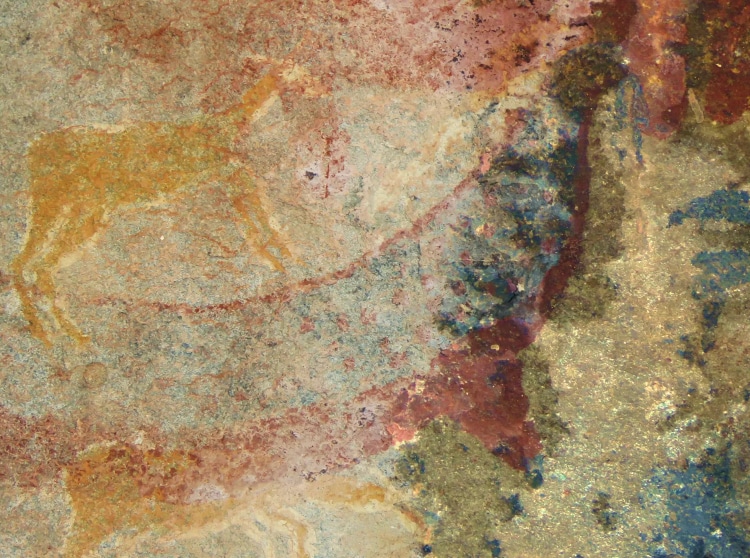
Photo of the cave painting that may depict a dicynodont, taken on-site in the Karoo region of South Africa (Photo: Julien Benoit, published by PLOS ONE, CC-BY 4.0)
The dicynodont was an herbivore known for two prominent tusks.
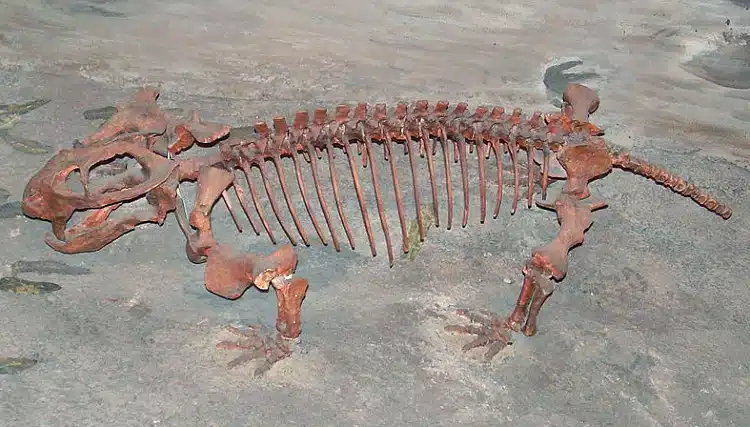
Dicynodont skeleton (Photo: Ninjatacoshell on Wikimedia, CC BY-SA 3.0)
Benoit believes the San people used dicynodont fossils as inspiration for the cave art and so were early paleontologists.
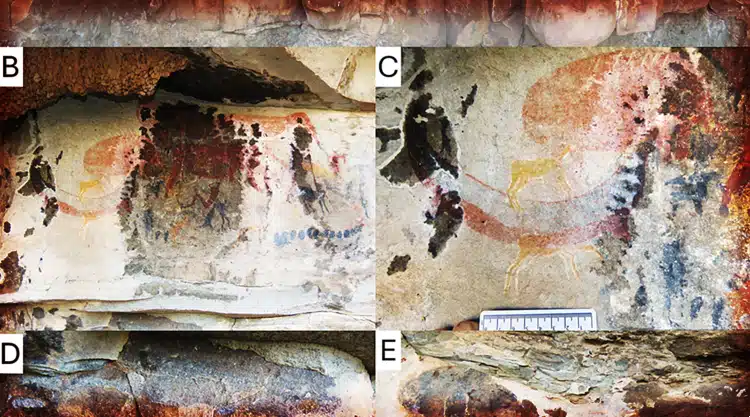
Additional images of the cave painting taken on-site in the Karoo region of South Africa (Photo: Julien Benoit, published by PLOS ONE, CC-BY 4.0)
Could these artworks made hundreds of years apart depict the same creature?
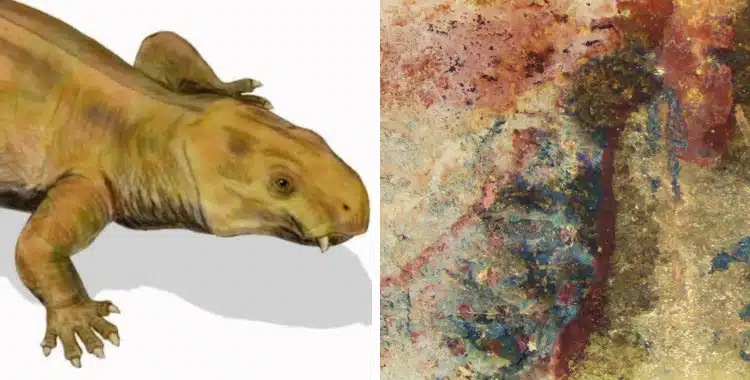
Left: Contemporary illustrator’s rendering of dicynodont (Photo: Nobu Tamura via Wikimedia, CC BY-SA 3.0, © N. Tamura), Right: Cave painting (Photo: Julien Benoit, published by PLOS ONE, CC-BY 4.0)
Julien Benoit: Website | YouTube | ResearchGate
h/t: [IFLScience]
Related Articles:
51,000-Year-Old Cave Art in Indonesia Is the World’s Oldest Figurative Art
This 45,000-Year-Old Warty Pig Cave Painting May Be the Oldest Known Animal Art
Three Young Boys Discover Rare Tyrannosaurus Rex Fossil While on a Hike
